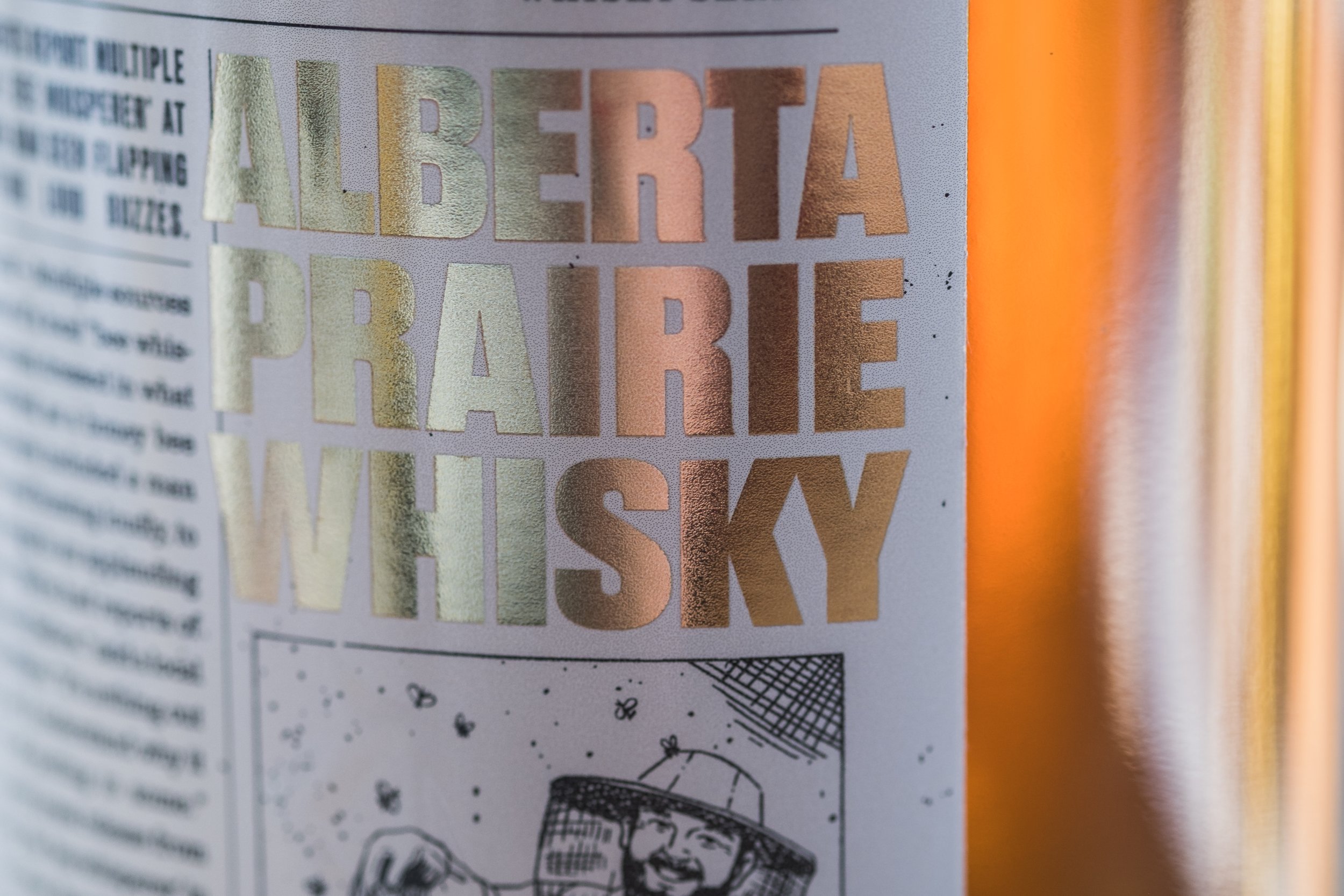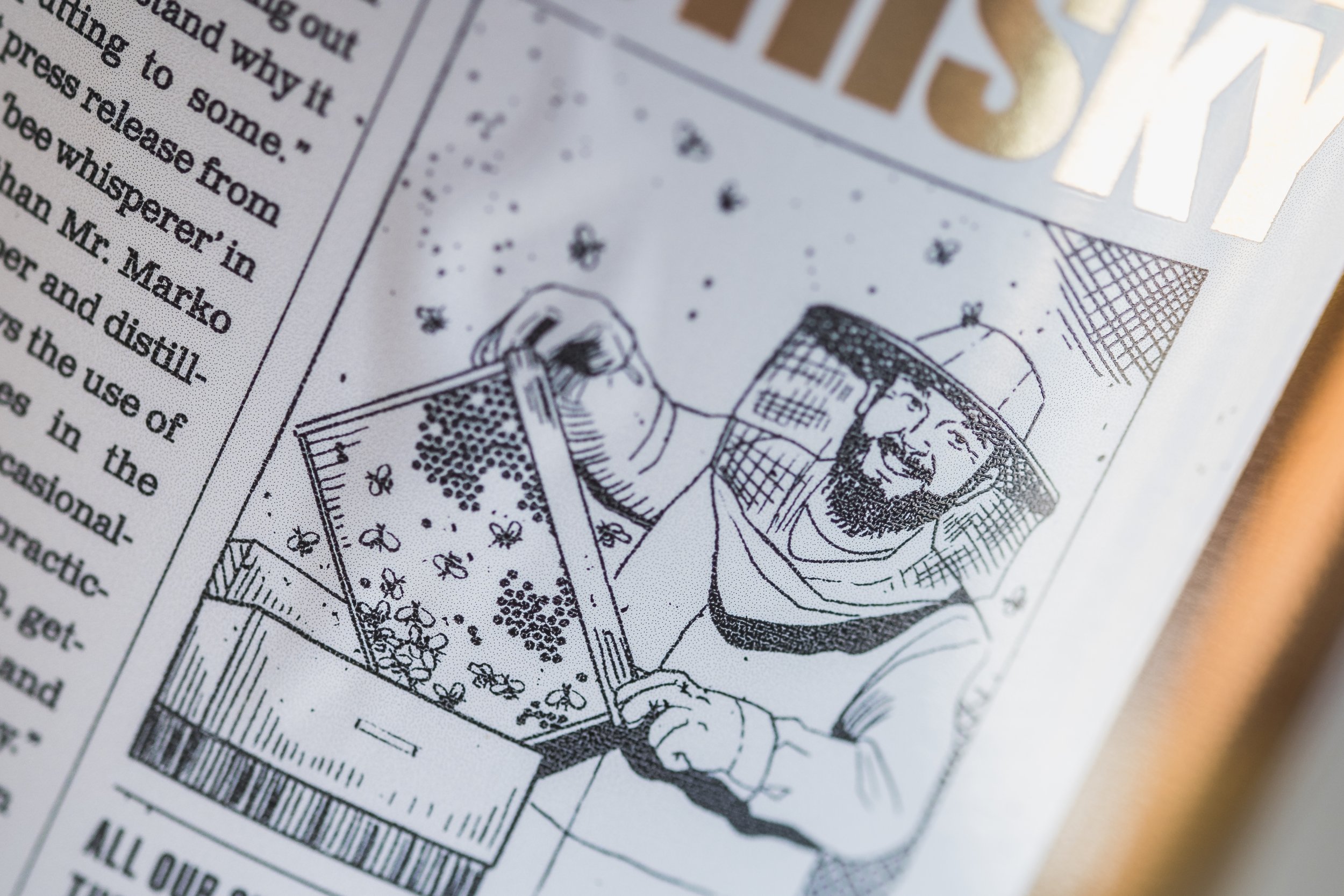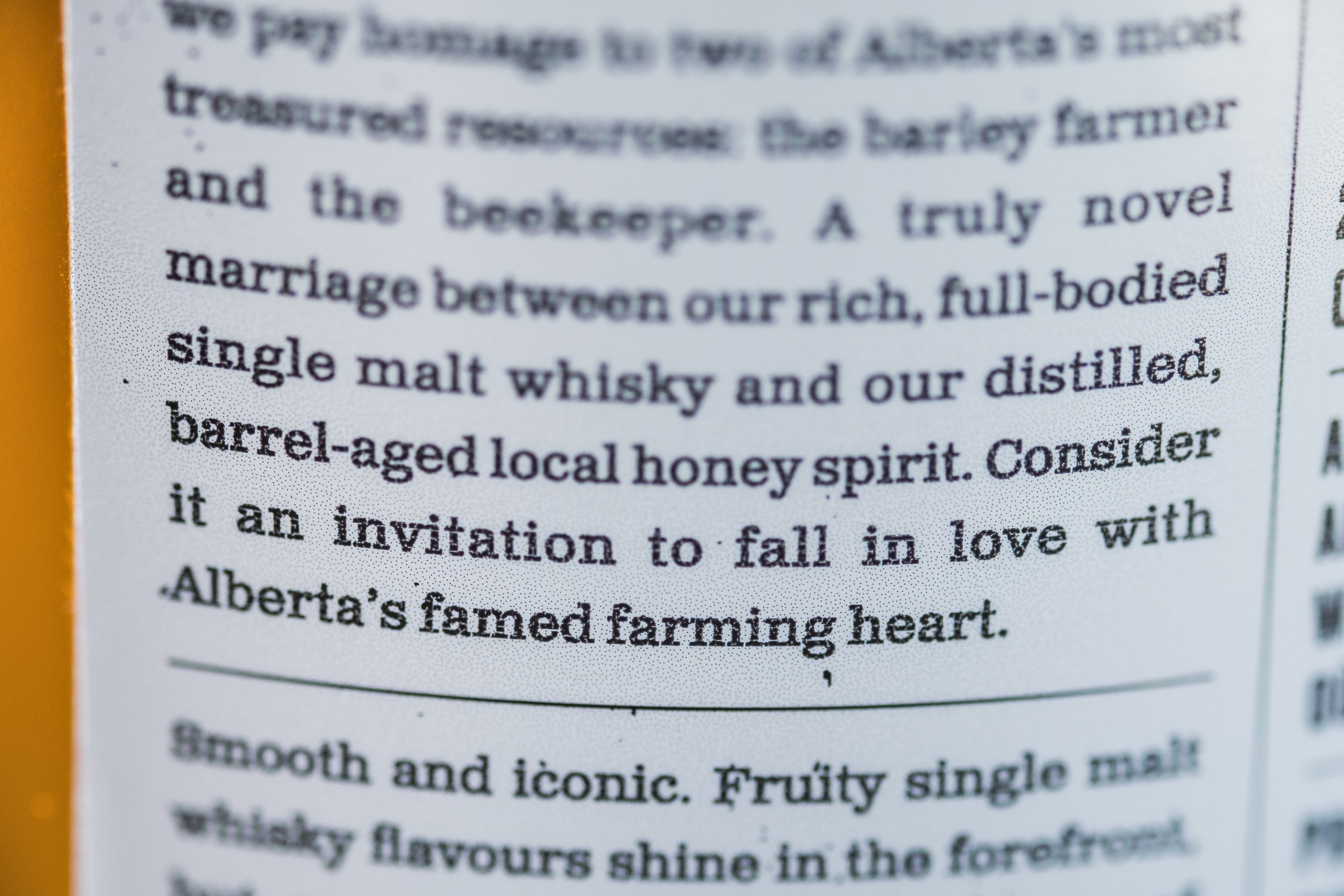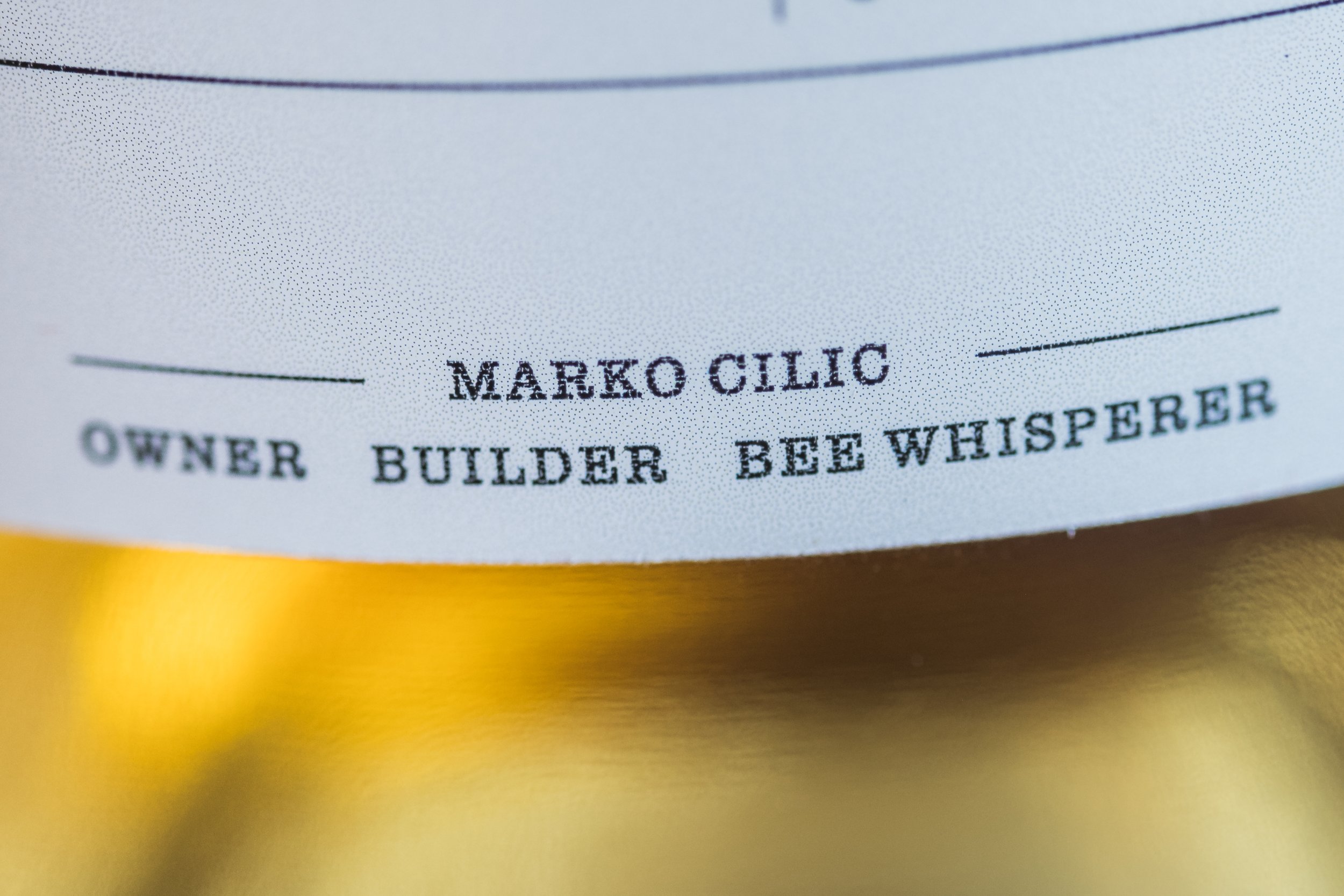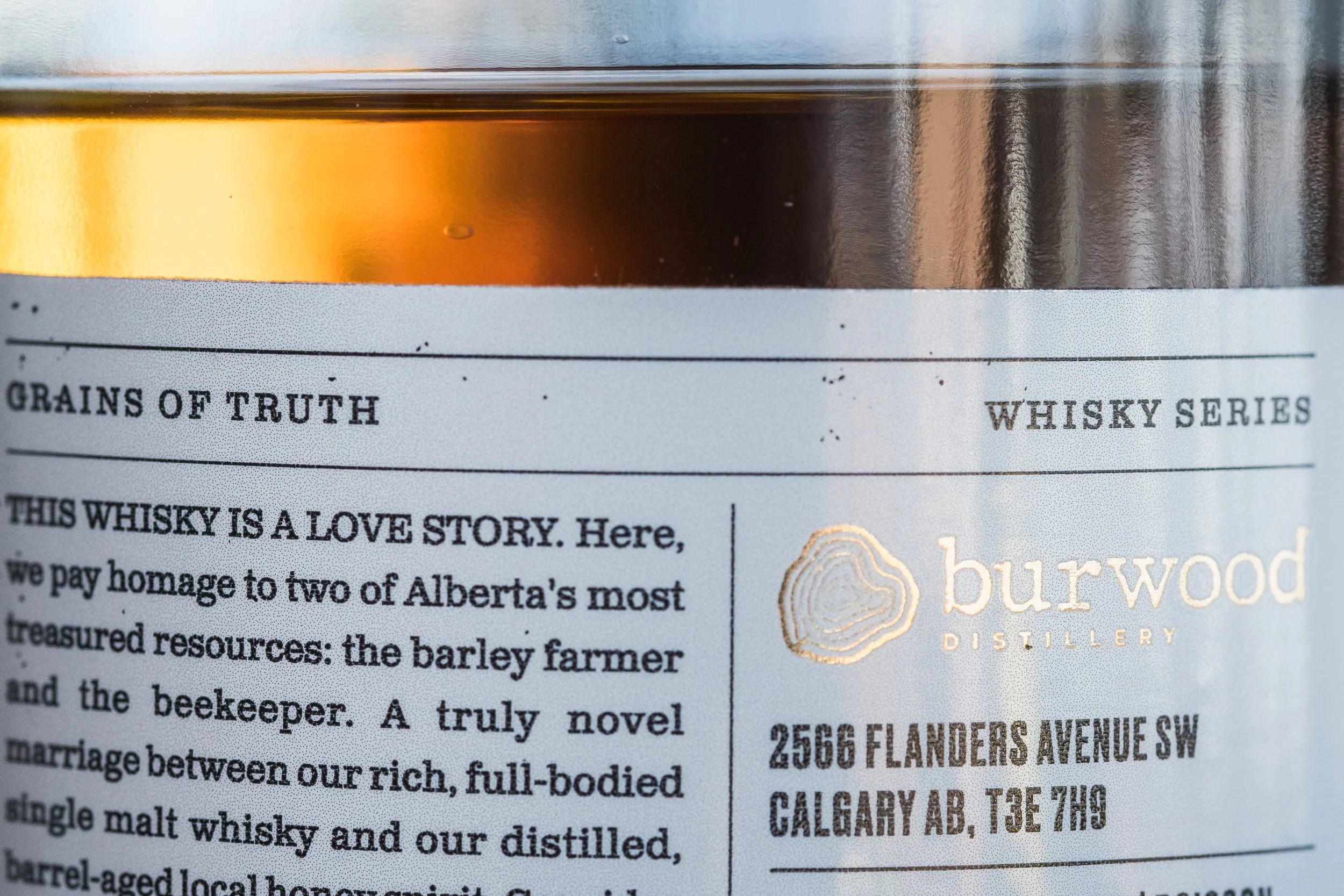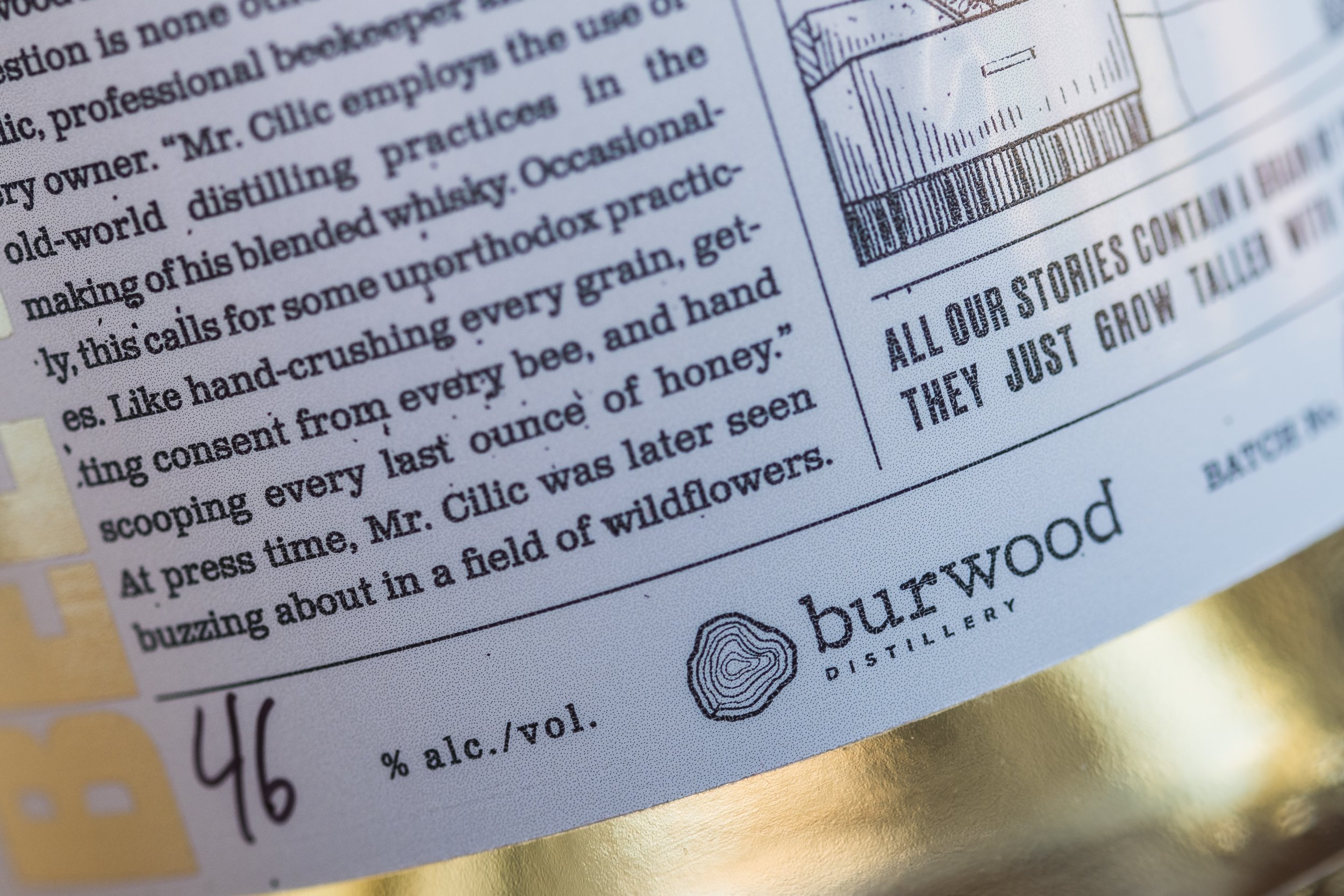Burwood Bee Whisperer
Canadian Whisky | 46% ABV
Score: 6/10
Good stuff.
TL;DR
Delicious honey cakes
When the 1/11th rule is used properly
What’s the 1/11th or 9.09% rule? Well Canada can be a funny place sometimes. I’d like to think we are generally straight shooters, fairly apologetic and easy going when warranted and have a reputation for our love of frozen sports. But when it comes to whisky, we are a hot mess.
Walk into a bar in North America and ask for a “rye and coke” or “rye and ginger” and you’re likely going to be served a Canadian rye whisky. Except it’s not made from rye at all. It’s a colloquial term that’s been erroneously associated with whisky in Canada where distilled spirit was once made from leftover rye grains, something that was hardy enough to grow in our harsh climate and short growing season several generations ago. Within our whisky legislation, there are no naming requirements that describe how to label whisky based on the grains from which it’s made, providing a potential avenue to deceive customers. We’ve merely adopted the historical rye descriptor even though the vast majority of distilled spirits here are made from corn in column stills and distilled at an absurdly high-proof (the average heart cut is about 75-80 %ABV if memory serves), and is differentiated from the American bourbon counterpart by the fact most of our whisky is aged in first or second-fill ex-bourbon barrels.
Now I’ve covered a minor niggle of mine regarding Canadian legislation, let’s cover the last one. By law, Canadian whisky could have 1/11th, or 9.09%, of the volume in your bottle be non-whisky spirit or flavouring. This spirit must be an aged spirit of at least two years. So aged cognac, port, sherry, wine, bourbon, mezcal, scotch, or other similar spirits could be added to Canadian whisky, as long as the resulting “blend possesses the aroma, taste and character generally attributed to Canadian whisky”.
It really does leave a lot of flexibility to the distillery or blending team and therefore a modicum of risk to the buyer. Are they adding a component to lift up a sub-par single grain (e.g., corn distilled in column still) aged in a tired refill cask so you might be getting a disjointed and heterogeneous whisky? Are they adding a component strictly for colouring purposes? Want to truly make a sherry bomb? Don’t go through the Billy Walker hassle of buying a distillery and re-racking whisky into very wet sherry casks, just come to Canada and you can literally pour sherry into your whisky and sell it. The positive aspect of all this flexibility is distillers or blenders can add a component to enhance and supplement an already solid whisky.
That’s where I feel that Burwood has used but not abused the 1/11th rule. In this Bee Whisperer release, they’ve taken their single malt whisky and blended it with barrel-aged spirit distilled from local honey farmers. It’s all done in-house with local products, and done with purposeful intent. Not an afterthought but rather a carefully crafted product that creates and fills a unique spot in the market.
I wasn’t finding a lot of details on their website regarding the honey spirit (it’s not a diss on Burwood, most distilleries don’t feature product details on their website) so I reached out to Burwood to get some unique insights. I got in touch with Jordan Ramey, Burwood’s co-owner and COO, and someone who holds the position of Professor of Brewing Science at Olds College in Alberta after receiving his PhD. in microbiology and immunology. So just the perfect person to try and extract some juicy factoids from then.
BB: Can you describe the general process for making your honey spirit? Does the honey mixture require a special yeast or fermentation temperature controls? What is the average fermentation time?
JR: We ferment warm (low 30’s) with a chardonnay yeast in horizontal tanks that are shallow to drive ester formation. Fermentation time is approximately one week. There is a lot of "babying" of the yeast similar to how the mead makers run their fermentations.
BB: Can you describe any unique facts about distilling a honey wash? Is it a single or double distillation? What are the cut points? What is the final average %ABV of the new-make honey spirit?
JR: I can't share everything, but I can say that we have done both a short column distillation and double pot. We're switching to 100% double pot as we find it leaves more complex flavours in the spirit.
BB: What does barrel ageing do to the flavours of the honey spirit? What barrels do you use for maturing the spirit, and how long do you mature it?
JR: The barrels add the notes from the wood, soften the spirit character, and really help the wildflower notes of the botanicals shine through. (BB here: botanicals does not imply gin-like ingredients or qualities. In Canadian legislation, honey is technically considered a botanical ingredient as it is not a grain from which whisky can be legally made from)
BB: For the single malt portion, are there any tidbits you would be willing to share? Barrel types and sizes, typical maturation time, distilling facts?
JR: We run 15's, 25's, 30's, and 53's (gallon) barrels and hand select each barrel for this spirit. They are almost all American Whiskey barrels. Matured for >three years.
So there you have it. Shall we dive in and see what the buzz is all about?
Review
Burwood Bee Whisperer, Canadian Whisky, Batch 2, 2022 release, NC, NCF, 46% ABV
CAD$70 (£42) paid.
Nose
Very light and airy full of delectable aromas. Heather honey, light caramel, and orchard flower blossoms lead the charge. Undertones of vanilla, red apples and cinnamon, almost like an apple streusel tart. There’s barley mash/sugar tucked away that becomes more apparent with increasing time in glass. It’s a very enticing nose.
Palate
A swirl of honey, cocoa powder, cinnamon, nutmeg, ginger, and vanilla. There’s a malty creaminess underpinning the experience. Successive sips bring out a touch of red apples, a floral aspect that I can describe as elderflower liqueur, the light caramel from the nose and more vanilla. It reminds me of an apple coffee cake drizzled with honey before serving.
The finish is a medley of white pepper tingles riding a wave of honey and pears, a surprising addition to the experience as I hadn’t detected pears anywhere else.
The Dregs
The nose is far more complex, lovely, and balanced than the palate. I don’t mean to say that the palate and taste is bad, obviously it’s not given the score. But I could sit and smell this whisky all day and never be bored of it. I will note that I assessed this whisky and wrote by tasting notes about if before looking at Burwood’s official notes or reaching out to Jordan. So the notes of elderflower liqueur were accurate after all and were coming from the aged honey spirit. I will probably keep a bottle of this, or at least something else from Burwood, on my shelves. It’s a local distillery doing things right and we must acknowledge and celebrate those few that are churning out quality.
As I was analysing the Bee Whisperer, two different whiskies popped into my head that might help you understand this whisky for yourself if you’ve tried them. The first half of the experience is extremely similar to Douglas Laing’s The Gauldrons, a Campbeltown blended malt I’ve covered before. The trailing end of the experience distinctly reminded me of another Canadian single malt, Ironworks’ Heart Iron. It’s not new-make spirity, nor is it a chilli-like heat that you might expect from a young spirit. It’s a refreshing pepperiness similar to how a sprinkle of freshly cracked black pepper can accentuate your hot meal. Just a lovely little zip that seems to drag out the finish longer than it should given the age. I would wager the Bee Whisperer and Heart Iron’s 3-4ish yo whisky has a finish length similar to a 10-12 yo non-chill filtered unpeated ex-bourbon Scottish malt whisky.
A special thank you to Jordan for taking the time to answer some questions. Major kudos for a co-owner and professor for taking the time of day to answer our questions.
Tried this? Share your thoughts in the comments below. BB 🐝
-
Dramface is free.
Its fierce independence and community-focused content is funded by that same community. We don’t do ads, sponsorships or paid-for content. If you like what we do you can support us by becoming a Dramface member for the price of a magazine.
However, if you’ve found a particular article valuable, you also have the option to make a direct donation to the writer, here: buy me a dram - you’d make their day. Thank you.
For more on Dramface and our funding read our about page here.




